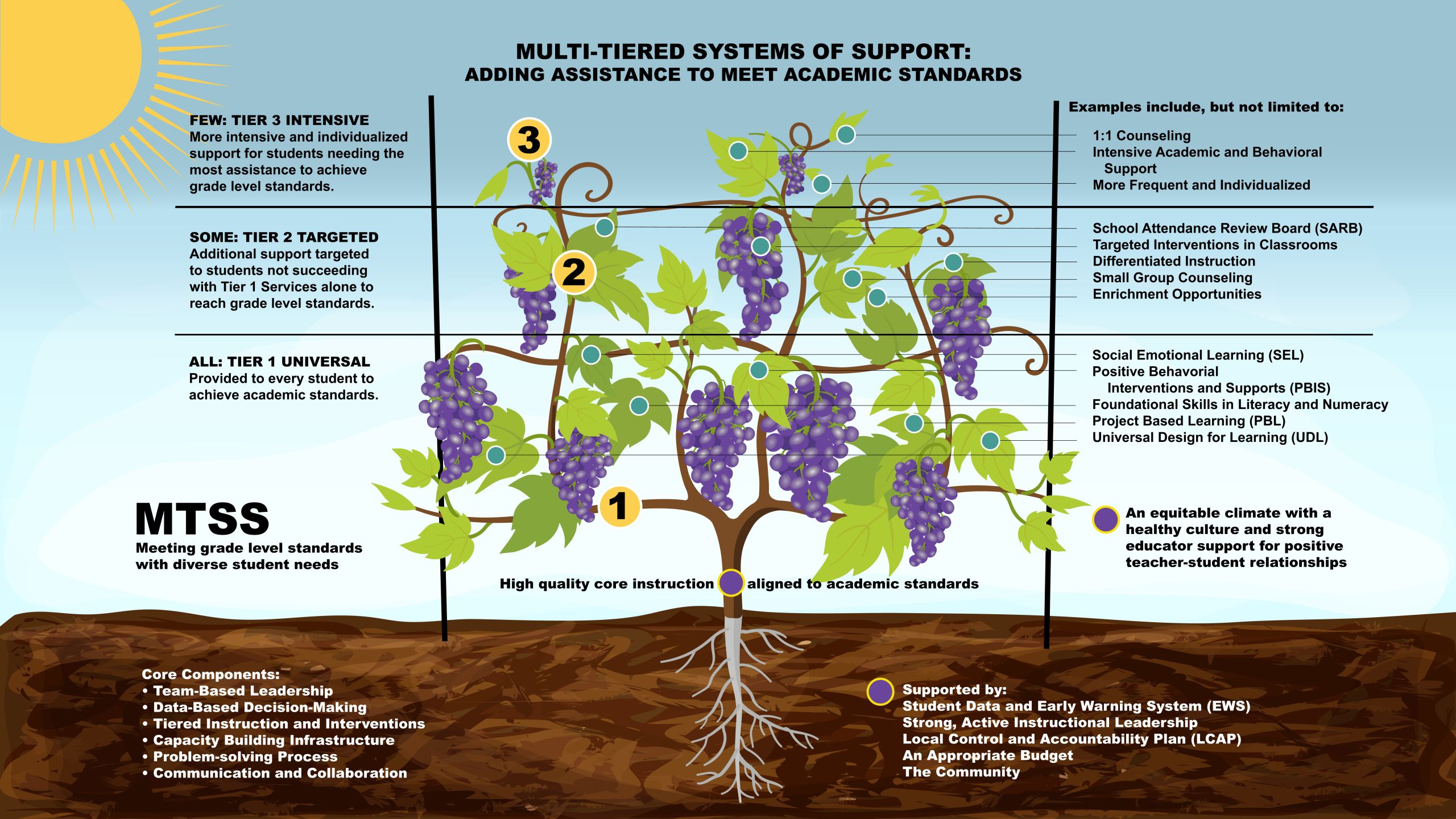Understanding Multiple Tiered Systems of Support (MTSS)

MTSS is the framework for a student-centered process that uses continuous improvement to support the varied learning needs of all students to ensure all students receive an equitable, high-quality education and reach grade level academic standards. Educators use data to provide and evaluate the effectiveness of multiple tiers of integrated academic, attendance, behavior, and social emotional instruction and support. Schools organize resources and build capacity by aligning academic standards, behavioral expectations, increased engagement, and positive culture and climate. When implemented with fidelity and sustained over time, every student is provided the opportunity to achieve and succeed.
Universal (All) – Tier 1
Tier 1 supports are considered “universal” because they are provided to every student. Examples of strong Tier 1 supports include, but are not limited to:
- Social Emotional Learning (SEL) practices.
- Positive Behavioral Interventions and Supports (PBIS)
- Foundational Skills in Literacy and Numeracy
- Project Based Learning
Our focus on Universal Design for Learning is the foundation of our Tier 1. We leverage our culturally responsive instructional model to best meet all our students’ needs.
Targeted (Some) – Tier 2
Tier 2 supports are targeted services delivered to students who are not reaching grade level standards with Tier 1 instruction. School Teams meet regularly to review data to identify students who need Tier 2 support and use data from multiple domains to determine appropriate interventions. The District utilizes data “cut points” across academics, behavior, attendance, and Social Emotional Learning to determine when a student needs to be placed in Tier 2.
Intensive (Few) – Tier 3
Tier 3 support is for students not responding to Tier 2 help or demonstrating a more intense need to meet grade level academic standards. Tier 3 supports provide more frequent, intense, and individualized interventions. Students can be in different MTSS tiers for different needs simultaneously. For example, a student might be in a Tier 3 intervention for a Behavioral purpose and a Tier 2 small-group intervention for math.
High-Quality Core Instruction
MTSS considers the whole child’s social-emotional/behavioral state, attendance, and academic engagement. The interdependent relationship of these characteristics is central to the MTSS framework. For example, we cannot provide High-Quality Core Instruction for students who do not attend or may be dealing with trauma at home.
All students receive high-quality, standards-based, culturally and linguistically relevant instruction in their general education classroom. Highly qualified teachers maintain high academic, attendance, and behavioral expectations through differentiated instructional practices designed to ensure students achieve grade level standards.
